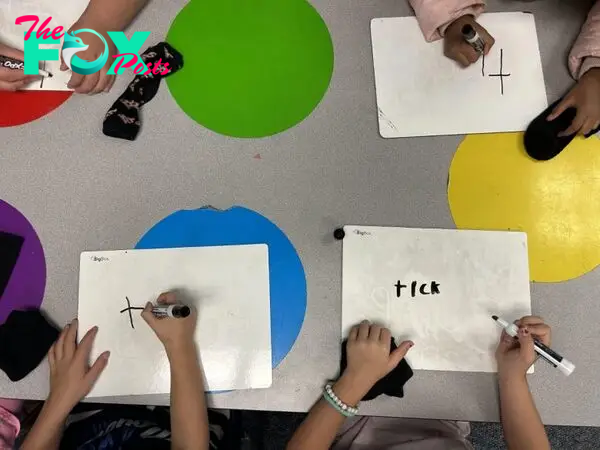Education
Democrats’ school funding proposal would give more money to rural districts, increase per-student spending
Colorado school districts could see a slight bump in the amount of state funding they receive per student next year under a bill introduced Friday by Democratic lawmakers, who also want to devote more money to rural school districts.
Senate Bill 188 marks the first school funding bill lawmakers have brought forward this legislative session. It was debuted ahead of the state budget, known as the long bill, which was introduced late Monday.
The legislation would increase the base amount of funding districts receive per student by about $420, up to $8,496, for the 2024-25 school year — largely because of the state’s commitment to paying off the debt it owes to schools this year, known as the budget stabilization factor. The jump in funding is also driven by inflation plus growth of Colorado’s student population.
Lawmakers are proposing the funding boost after Colorado has consistently ranked behind other states in the amount of per-pupil funding it dedicates to schools, falling $2,000 to $2,500 short of the national average in recent years, according to Tracie Rainey, executive director of the nonprofit Colorado School Finance Project.
It’s unclear how much the additional funding would close the gap between per-pupil funding levels in Colorado and other states.
“It’s hard to know where we’ll end up this year,” Rainey said. “My guess is we will not have changed very much.”
Legislators sponsoring the bill acknowledge that even with the additional money they want to give schools for each student they educate, it won’t meet schools’ needs. Instead, eliminating that debt — totaling $141 million — means education dollars will only go as far as they did in the late 1980s when accounting for inflation and enrollment growth.
“We are not fully funding schools,” said State Rep. Barbara McLachlan, a Durango Democrat who is sponsoring the bill.

“We have a lot of things that are really needed now that we didn’t need in 1989 as much,” McLachlan said, citing mental health resources and technology support. “So we need to change and address current issues instead of 1989 issues.”
Sen. Rachel Zenzinger, an Arvada Democrat who is also sponsoring the bill, said that the per-student funding amount of $8,496 is just an average. As in past years, districts would receive additional funding for specific groups of students who typically need more support, including kids from low-income families and students learning English.
Even with the extra money, Zenzinger said, state funding for schools is “still inadequate.”
☀️ READ MORE
Bat disease that could devastate Colorado’s ecosystem found; public asked to be on the lookout
Colorado lawmakers reject request to hire state lawyers to prosecute gun crimes in federal court
Sand Creek, Amache descendants find common cause to pass history to younger generations
Some lawmakers have been in behind-the-scenes talks with school districts and education advocates about more consequential changes to the state’s school funding formula — which has remained the same for 30 years — after a task force earlier this year released recommendations on how to improve the state’s approach to school funding.
Legislation advocating for more substantial changes to the funding formula — which would likely not go into effect during the next school year — has not yet been introduced.
McLachlan anticipates that proposals for more significant funding changes could cross lawmakers’ desks next year after results of two studies come out, both of which are calculating the precise amount of funding it takes to educate a Colorado student.
Extra support for rural districts and students with disabilities
Another major component of the school funding bill would route more money to rural school districts, many of which have fewer resources and fewer staff than districts in more dense parts of the state.
Rural districts have continually benefitted from one-time grant funding from the state, and lawmakers are now pushing to establish a permanent source of additional funding for districts. That share of funding would not be part of the state’s school funding formula but would exist as “a standalone factor” that would guarantee rural districts more reliable funding in the future, Zenzinger said.
“We have known for the last eight years that there is an equity gap within our formula whereby our rural schools are shortchanged, and so we have been plugging that hole for the last eight years with temporary money,” she told The Colorado Sun. “And we know it exists and if we continue to do it as one-time temporary money, then the districts can’t take full advantage of that funding because they can’t plan for it in the same way you can plan for money you know you are getting.”
Temporary funding can help districts invest in programs and resources that are helpful, Zenzinger added, “but it’s not the highest and best use of that funding.”
Under the bill, the state would allocate between $30 million and $35 million to rural districts as a permanent pool of funding in addition to per-pupil funding. In the past, the state has distributed that same amount to rural districts through a one-time, temporary basis.
-

 Education35m ago
Education35m agoWhat would it mean if President-elect Trump dismantled the US Department of Education?
-

 Education3d ago
Education3d agoPhiladelphia students have a new reading and writing curriculum − a literacy expert explains what’s changing
-

 Education3d ago
Education3d agoWhy school police officers may not be the most effective way to prevent violence
-

 Education5d ago
Education5d agoCampus diversity is becoming difficult to measure as students keep their race and ethnicity hidden on college applications
-

 Education6d ago
Education6d agoFederal judge rules that Louisiana shalt not require public schools to post the Ten Commandments
-

 Education6d ago
Education6d agoCampuses are ground zero in debates about antisemitism − but that’s been true for 100 years
-

 Education1w ago
Education1w agoSocioeconomic status explains most of the racial and ethnic achievement gaps in elementary school
-

 Education1w ago
Education1w agoMothers, metaphors and dyslexia: What language reveals about the challenges of a child’s learning disability



























